The Institute of Nautical Archaeology is committed to locating, excavating, recording, preserving, and publishing shipwrecks and other archaeological sites of maritime significance all over the world.
Our Mission
Bringing History to Light Through the Science of Shipwrecks
What we do
The Institute of Nautical Archaeology (INA) is a non-profit, international research organization founded in 1972 by Dr. George F. Bass †, who pioneered the science of archaeological excavation under water. INA archaeologists are responsible for the excavation of sites that include the Late Bronze Age shipwreck at Uluburun, Turkey, the Phoenician shipwreck at Bajo de la Campana, Spain, the Byzantine shipwreck at Yassıada, Turkey, the side-wheel steamboat Heroine in Oklahoma’s Red River, and the Civil War blockade runner Denbigh in Texas, to name a few. The broad scope of what we do involves remote sensing, underwater excavation, digital recording, decompression diving, artifact conservation, scientific analysis, and lots and lots of research.
Who we are
In 1976, INA affiliated with Texas A&M University, and the graduate Nautical Archaeology Program (NAP) was established as an independent academic unit. Today, in conjunction with 7 full-time NAP faculty and ~40 NAP graduate students pursuing either an M.S. in Maritime Archaeology and Conservation or a Ph.D. in Anthropology, INA sponsors projects all over the world. NAP students receive field training on INA-sponsored excavations, and together we advance the field by training future academics, museum curators, and state and federal underwater archaeologists. Numerous INA-sponsored projects are directed by some of our more than 50 Research Associates, many of whom are NAP graduates.
How we do it
INA is a big, talented family with many partners. Because many of the ancient shipwrecks INA has excavated are in Turkey, INA built, owns, and operates the Bodrum Research Center (BRC), with offices, conservation laboratories, and a research library. The BRC is home to INA’s state-of-the-art ship Virazon II, which is the first ship to be built and classed as an Archaeological Research Vessel. Virazon II is berthed near Bodrum but capable of carrying out fieldwork around the Mediterranean and beyond. INA is guided by a generous, talented, and involved Board of Directors. In recent years, the INA Archaeological Committee has awarded $150,000 annually in support of archaeological fieldwork, research, and publications. Numerous INA-excavated shipwrecks have been and continue to be published in the Ed Rachal Nautical Archaeology Series of TAMU Press. Interim reports appear in the INA Quarterly, a benefit of membership, and in the monthly INA Insider e-newsletter.


